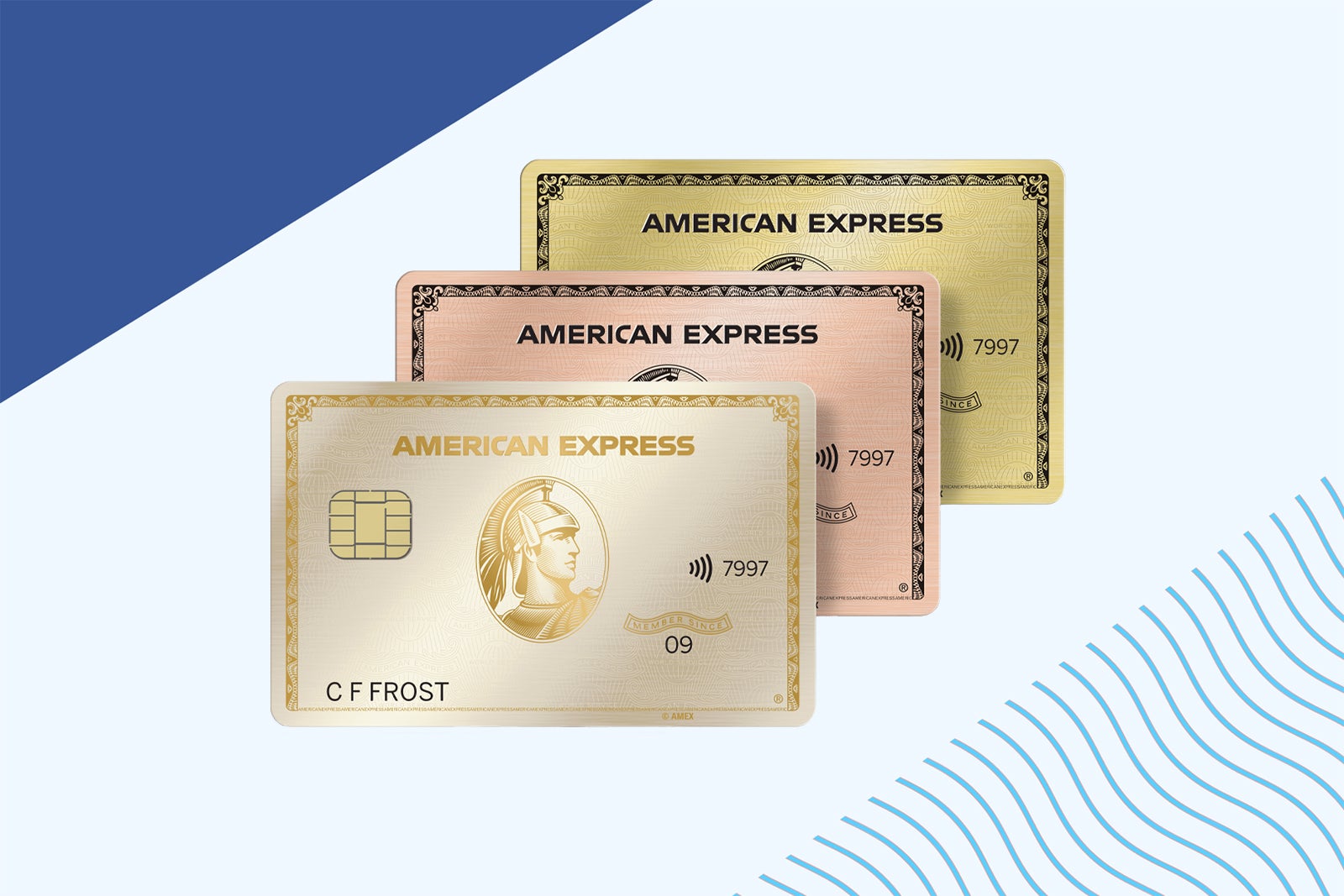The best stand-alone credit cards for your wallet
Editor’s note: This is a recurring post, regularly updated with new information and offers.
The worst-kept secret of travel rewards is that credit card welcome bonuses, not flown-in-seat flight miles or paid hotel stays, are typically the best way to earn points and miles these days.
That, along with complimentary bonus categories, is why a multi-card strategy such as the Chase Trifecta works well for so many people. At TPG, some staffers happily have 20 or more credit cards in their wallets to maximize every dollar spent.
But the truth is a wallet full of multiple rewards cards isn’t a viable (let alone desirable) option for everyone.
Maybe you plan on applying for a mortgage soon and want to minimize the number of hard inquiries or new accounts on your credit report. Maybe you don’t have an efficient way to keep track of multiple cards with multiple payment dates and hefty annual fees. Or maybe you don’t want to spend the time to learn the nuances of these programs to squeeze as much value from them as possible.
Whatever your situation is, there’s no reason you can’t still enjoy exceptional travel rewards with only one rewards card in your wallet.
That said, if you’re going to stick to a single card, you must pick it carefully.
Here are some of the best stand-alone credit cards — though, as always, be sure to check out our best credit card offers for all of TPG’s selections.
Overview of the best stand-alone cards

Daily Newsletter
Reward your inbox with the TPG Daily newsletter
Join over 700,000 readers for breaking news, in-depth guides and exclusive deals from TPG’s experts
How we picked our favorite stand-alone cards
In compiling this list, I focused on two main factors:
- Welcome offer: If you’re only applying for one credit card, you need a large bonus upfront to make sure you’ll have enough points to cover at least your first major redemption.
- Bonus categories/earning rate: Whether you spend $10,000 or $100,000 a year, it’s important to have a credit card that rewards you where you use it most — or, alternatively, that has a simple, flat rate of return.
I didn’t put much weight into perks like Global Entry application credits or lounge access — if you’re an infrequent traveler sticking to a single credit card, those are luxuries and not necessities.
You’ll also notice that every card on this list is either a transferable points card or one that offers a fixed value. Again, if you only have one rewards currency at your disposal, it’s important that you pick a flexible one that you’ll be able to redeem whether you’re traveling across the state or across an ocean.
All of the welcome bonus valuations below are based on TPG’s August 2024 valuations.
Chase Sapphire Preferred Card
If you’ve been in the points and miles world for any length of time, you’ve definitely heard of the Chase Sapphire Preferred.
Welcome bonus: Earn 60,000 bonus points after spending $4,000 on purchases in the first three months from account opening.
Welcome offer value: $1,230
Annual fee: $95
Why we chose it: The Chase Sapphire Preferred Card has long been a favorite of TPG staffers (and readers) for many reasons.
The Sapphire Preferred offers a 60,000-point welcome bonus and a manageable $95 annual fee. It’s also stacked with bonus categories and perks, as cardholders will earn the following:
- 5 points per dollar on all travel purchased through Chase Travel℠ and on Lyft purchases (Lyft purchases through March 2025)
- 3 points per dollar on dining, including eligible delivery services, select streaming services and online grocery purchases (excluding wholesale clubs, Target and Walmart)
- 2 points per dollar on all other travel purchases
- 1 point per dollar on all other purchases
In addition, cardmembers can enjoy a $50 annual credit on hotel stays booked through Chase Travel, essentially bringing the effective annual fee down to $45. And on every anniversary, cardholders will receive 10% of their points back based on their annual spending (at a rate of 1 point for each dollar spent).
Plus, the Sapphire Preferred offers valuable travel insurance benefits and access to a fantastic list of Ultimate Rewards transfer partners.
To learn more, check out our full review of the Sapphire Preferred.
Apply here: Chase Sapphire Preferred
Capital One Venture Rewards Credit Card
If you want a card without multiple bonus categories to track, the Capital One Venture Rewards is a solid option.
Welcome bonus: Earn 75,000 bonus miles after spending $4,000 on purchases in the first three months from account opening. Plus, receive a one-time $250 Capital One Travel credit in your first cardholder year.
Welcome offer value: $1,638
Annual fee: $95 (see rates and fees)
Why we chose it: Round after round of award chart devaluations have made fixed-value cards like the Capital One Venture Rewards a more attractive option for many people.
The card earns 2 miles per dollar on all purchases with no annual cap — though you’ll also earn 5 miles per dollar spent on hotels, vacation rentals and rental cars booked through Capital One Travel. There’s no minimum redemption amount, so you can redeem your miles as you please.
Capital One has 15-plus transfer partners, with most transferring at a 1:1 transfer ratio. This combination of a strong earning rate, flexible fixed-value redemptions and a comprehensive list of transfer partners really puts the Venture Rewards in a league of its own — and makes it a great solo card for your wallet.
To learn more, check out our full review of the Venture Rewards.
Apply here: Capital One Venture Rewards Credit Card
Chase Sapphire Reserve
Chase’s premium-tier consumer card, the Chase Sapphire Reserve, is a great option to consider if you can justify its steep annual fee.
Welcome bonus: Earn 60,000 bonus points after spending $4,000 on purchases in the first three months from account opening.
Welcome offer value: $1,230
Annual fee: $550
Why we chose it: If you asked me to pick only one of my credit cards to keep forever, I would choose the Chase Sapphire Reserve without hesitation. This card packs just about everything you could want into one solid metal shell.
The 3 points per dollar this card earns in very broadly defined travel and dining categories continue to reward me whether I’m at home or on the road.
The Sapphire Reserve also offers some competitive category bonuses such as 10 points per dollar on Chase Dining booked through Chase Travel, 10 points per dollar on hotel and car rental purchases through Chase Travel and 5 points per dollar on airline travel booked through the same travel portal.
Even though it comes with a $550 annual fee, your real out-of-pocket cost is only $250 thanks to the $300 annual travel credit, which Chase will automatically apply for you.
Add in perks like generous travel and baggage insurance, a Priority Pass Select membership, Global Entry or TSA PreCheck reimbursement and access to a premium concierge service, and it’s easy to see why the Sapphire Reserve is the complete package.
To learn more, check out our full review of the Sapphire Reserve.
Apply here: Chase Sapphire Reserve
Capital One Venture X Rewards Credit Card
The Capital One Venture X is arguably the most popular premium credit card on the market right now.
Welcome bonus: Earn 75,000 bonus miles after spending $4,000 on purchases within the first three months from account opening.
Welcome offer value: $1,388
Annual fee: $395 (see rates and fees)
Why we chose it: If you’re looking for a premium card with a lower annual fee than the Sapphire Reserve, the Capital One Venture X would be a great addition to your wallet.
For a $395 annual fee, the Venture X features an array of benefits beyond the initial sign-up bonus, including:
- $300 in credits annually for Capital One Travel bookings
- Complimentary lounge access to Capital One lounges and Priority Pass lounges for you and some (complimentary) authorized users (see rates and fees)
- 10,000 miles every year on your anniversary (worth $100 toward travel purchases)
- Up to $100 statement credits for TSA PreCheck/Global Entry
- Trip cancellation and interruption protection, trip delay reimbursement and cellphone protection
The Venture X also features a better earning rate than the Venture Rewards — one that’s very aligned with the Sapphire Reserve. Cardmembers will earn 10 miles per dollar on hotels and car rentals booked via Capital One Travel, 5 miles per dollar on flights and vacation rentals booked via Capital One Travel and 2 miles per dollar on other purchases.
To learn more, check out our full review of the Capital One Venture X.
Apply here: Capital One Venture X
American Express Gold Card
The Amex Gold is a great choice for those who dine out often and buy a lot at U.S. supermarkets.
Welcome bonus: Earn 60,000 bonus points after spending $6,000 in the first six months of card membership — though be sure to check the CardMatch Tool to see if you’re targeted for an even higher offer (subject to change at any time). New cardmembers will also receive 20% back in statement credits on restaurant purchases in the first cardmember year (up to $100 back). Offer ends Nov. 6.
Welcome offer value: Up to $1,300
Annual fee: $325 (see rates and fees)
Why we chose it: The Amex Gold is nearly unparalleled in terms of bonus categories. It offers 4 points per dollar at worldwide restaurants (up to $50,000 per year, then 1 point per dollar) and 4 points per dollar at U.S. supermarkets (up to $25,000 a year, then 1 point per dollar). You’ll also earn 3 points per dollar on flights booked directly with the airline or via American Express Travel.
In addition, the card features up to $427 in annual statement credits that help justify its annual fee.
You’ll receive up to a $10 monthly dining statement credit (up to $120 each calendar year) for purchases made at Five Guys, Grubhub, the Cheesecake Factory, Goldbelly and Wine.com. Enrollment is required; terms apply.
In addition, you’ll also receive up to $120 in Uber Cash each calendar year (paid out in up to $10 increments per month), which can be used for Uber Eats orders or Uber rides in the U.S. You must add the card to the Uber app to receive the Uber Cash benefit. Enrollment is required; terms apply.
Additional statement credits include up to $100 every calendar year (up to $50 semi-annually) for purchases made at Resy-affiliated restaurants in the U.S. and up to $84 each calendar year (up to $7 per month) for purchases made at U.S. Dunkin’ Donuts. Enrollment is required; terms apply.
American Express’s Membership Rewards program offers an array of valuable redemption options — making the earning rates even more compelling for those looking to maximize their rewards.
To learn more, check out our full review of the Amex Gold.
Apply here: American Express Gold Card
The Blue Business Plus Credit Card from American Express
Even if you don’t own a large business, you can still qualify for a great business card like the Blue Business Plus.
Welcome bonus: Earn 15,000 bonus points after spending $3,000 in eligible purchases on the card within your first three months of card membership.
Welcome offer value: $300
Annual fee: $0 (see rates and fees)
Why we chose it: The Blue Business Plus Credit Card from American Express is one of the only no-annual-fee business cards to earn valuable transferable points. It also happens to be one of the top cards for everyday spending that doesn’t fall into your typical bonus categories.
You’ll earn 2 Membership Rewards points per dollar on your first $50,000 of annual spending (1 point per dollar after that), with no bonus categories to remember.
Points transfer to valuable partners such as Delta, Air Canada and British Airways. Instead of worrying about maximizing your spending, you can instead invest that time in perfecting your redemption strategies.
If you max out the $50,000 of double points annually, those 100,000 points a year can take you to some pretty cool places.
To learn more, check out our full review of the Blue Business Plus.
Apply here: Blue Business Plus from American Express
Bank of America Premium Rewards credit card
Bank of America doesn’t get as much attention as Chase, Capital One or American Express, but the Bank of America Premium Rewards is absolutely worth considering.
Welcome bonus: Earn 60,000 bonus points after spending $4,000 in purchases in the first 90 days of account opening.
Welcome offer value: $600
Annual fee: $95
Why we chose it: The Bank of America Premium Rewards card makes this list for a number of reasons. The $95 annual fee is more than offset by the up to $100 annual airline incidental statement credit, leaving you with five extra bucks for every year you have this card.
You’ll also receive up to $100 toward Global Entry or TSA PreCheck application fees every four years.
It also offers a unique bonus category structure that rewards Bank of America’s most valuable customers. All cardholders will earn 2 points per dollar on travel and dining and 1.5 points per dollar on everyday spending, but members of Bank of America’s Preferred Rewards® program can earn much more, up to 3.5 points per dollar on travel and dining and 2.625 points per dollar on everyday spending.
Keep in mind that the number of additional points you can earn depends on how much money you have with Bank of America or Merrill. To get the maximum bonus, you must have at least a $100,000 combined daily balance over three months.
To learn more, check out our full review of the Premium Rewards card.
Apply here: Bank of America Premium Rewards card
Bottom line
There’s a misconception among newcomers to the travel rewards world that you have to be TPG-level obsessed in order to make any meaningful headway with your points and miles.
While it’s absolutely true that you get out of this hobby what you put into it, I always like to remind my friends that one free flight a year is better than zero free flights a year. There’s no question that you’ll earn more points in both the short term and long term with a comprehensive card strategy, but you can get a ton of value from just a single card, especially one of the candidates listed above.
Related: The best first credit cards
For rates and fees of the Amex Gold Card, click here.
For rates and fees of the Blue Business Plus Card, click here.
For Capital One products listed on this page, some of the benefits may be provided by Visa® or Mastercard® and may vary by product. See the respective Guide to Benefits for details, as terms and exclusions apply.














